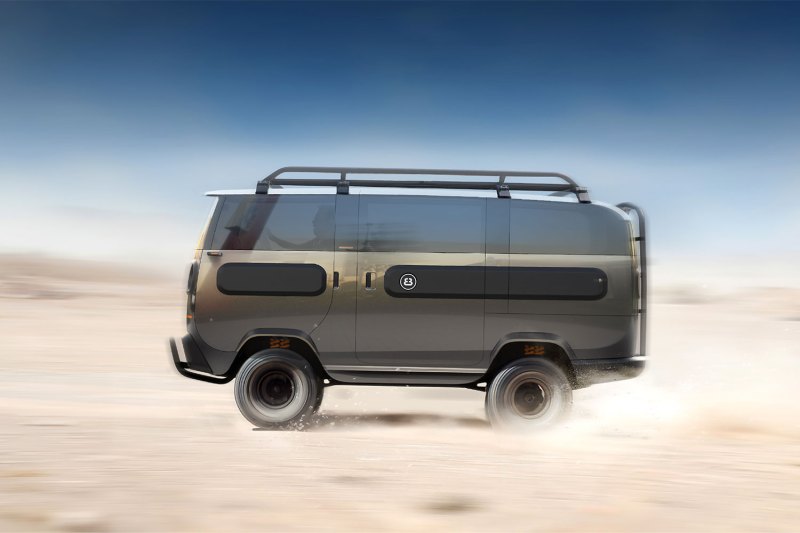Thankfully, fossil fuels — more specifically, our reliance on them — are dying. Almost every major automaker has a legit, electric-powered vehicle of some kind available right now. While most don’t quite have the range of their gas-powered counterparts, the technology is catching up. Soon enough, every road trip, no matter the distance, will be powered by an EV. One niche German manufacturer is banking on that with the debut of a unique modular electric van that’s like a retro campervan for the modern age.
The Ebussy by Electric Brands pulls clear inspiration from the VW microbuses of the ‘60s and ‘70s, but with a distinct front fascia that feels playful in a Thomas the Tank Engine way. Short for “electric bus system,” Ebussy isn’t powerful or fast, but it promises to be all things to all people. It’s built on a single platform that can be factory customized in one of ten configurations. Using interchangeable modules, the platform quick-changes from a convertible to a people-moving station wagon to an off-roader to a pickup truck.
Perhaps the most exciting configuration, however, is as a campervan. The Ebussy Camper includes a standard, on-road chassis plus two purpose-built camping modules. The latter features two clever slideouts that significantly expand the interior living space. Inside, the Ebussy Camper boasts a foldout sleeper sofa, a television with a multimedia sound system, and a workable kitchenette with a refrigerator, a cooktop, a sink, and a freshwater holding tank. The entire system works like a smart home by connecting via Bluetooth to your smartphone. Opting for the Offroad Camper module includes all of the above, plus an off-road-ready chassis and ruggedized all-terrain tires better suited for overlanding.

The entry-level configuration weighs just over 1,300 pounds (sans batteries), although it’s capable of hauling more than a ton. With the base, 10kWh lithium-ion battery, it’s billed as a short-haul, intracity mover good for only 125 miles. Upgrading to the optional roof-mounted solar panels and 30kWh power bank, however, more than triples its range to almost 400 miles on a single charge. That’s comparable to most modern mid-sized SUVs, and it fast charges in three to six hours, making it more than capable as a road-trip chariot. Electric motors at each wheel put down a modest 20 horsepower, but available torque is a stump-pulling 737 lb-ft. Plus, it’s all-wheel drive.
The Ebussy Camper configuration is now available, starting around $34,000 with a refundable $1,200 deposit. Sadly, the brand is based in Europe. But, with all the money you’ll be saving on gas, you can easily afford to have yours shipped across the pond.
If buying a brand-new campervan isn’t in your future right now, check out PlugVan’s plug-and-play van conversion module that starts at less than $7,000.



